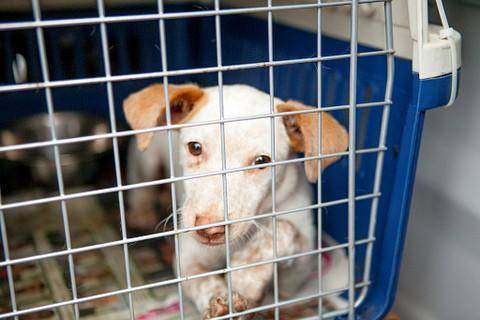Press Release
Emergencies can happen at any time. That’s why pet owners need to be as prepared as possible for a potential evacuation or shelter-in-place situation that could last for hours, days, weeks or even longer.
Knowing which hazards are most likely to impact your community is a good start. “What you will do in reaction to a tornado will likely be different than what you would do for a wildfire. So, plan accordingly for each scenario,” said Sharon Hawa, senior manager of emergency services at Best Friends Animal Society.
To help you prepare, ask yourself these important questions to help you plan accordingly:
- Where would you go?
- What would you need to bring?
- Would you be able to immediately find and secure your pets?
- Where could you bring your pet(s) to?
- Does your pet have up-to-date identification (ID tag, microchip) in the event you ever became separated?
To get started, Best Friends Animal Society offers several suggestions on readying yourself and your pets for natural disasters.
REINFORCE TAINING
- Now would be a great time to get your pet used to a carrier, crate, and/or leash and collar, if they aren’t so already.
- Consider taking a pet first-aid and/or a pet CPR course provided by local agencies to ensure you can attend to your pet’s potential medical needs as much as possible as veterinary care may not be easily accessible during a crisis.
SUPPLIES
Pet owners should put together a bag of basic supplies should you need to immediately evacuate. It should include the following:
- A thee to five day supply of wet and/or dry food (and water, if possible)
- Your pet’s toys and/or treats
- An extra supply of any necessary medications (as veterinary care may not be readily available in a crisis)
- A list of your pet’s medical needs, medicines taken, including dosing/frequency, as well as veterinary contact information
- Copies of current vaccination records
- A collar with a current ID tag or microchip that includes your cell phone
- A crate labeled with your pet’s name and your contact information (use masking tape and a permanent marker)
- Consider placing your well-worn sweater or sweatshirt inside the crate so that your pet travels more comfortably inside surrounded by a familiar scent around them.
- Extra poop bags
- For cats, a small bag of litter and litter pan
- Blanket and towels
- Bowl, can opener and spoon
CREATE A FIRST AID KIT
Should an injury or ailment occur during an emergency situation, it’s especially important to be prepared as a veterinarian may not be as readily accessible. Items for a first aid kit should include:
- Pet first-aid book
- Emergency contact list (including numbers for your veterinarian, an emergency vet clinic and a national poison control hotline.)
- Pet’s prescription medications
- Coban self-adherent wrap
- Kerlex gauze roll
- Sterile gauze pads (in various sizes)
- Abdominal (ABD) pads
- Ace bandage wraps
- Antiseptic pads or alcohol wipes
- Antibacterial cream or ointment
- Instant cold packs
- Emergency blanket
- Tweezers
- Blunt scissors
- Exam gloves
- Styptic blood clotting powder
- 10 ml. sterile saline syringes
- Cotton balls/cotton swabs
- 3% hydrogen peroxide
- Headlamp or flashlight
- Collapsible water bowl
- Muzzle
- Sling for carrying medium or large dogs
IDENTIFY POTENTIAL CAREGIVERS OR BOARDING OPTIONS
- Identify a few designated pet caregivers should you be displaced by a disaster and unable to retrieve your pets.
- Create a list of your pet(s) daily routine and any special needs as well as the location of their emergency supplies. Print out hard copies and send a digital copy to each designated caregiver.
- Research pet friendly lodging and create a list of several options within a five to 50-mile radius.
- Another option for displaced pets is a boarding facility. (Information on your approved boarding facilities should also be given to your designated caregiver in case they are unable to house your pet for any reason).
TAKE PHOTOS
- Take a photo of your pet as well as a photo of you with your pet to keep stored on your phone in case you are separated from one another.
- Also, consider printing out a few photos to have in case your phone isn’t available, loses power or access to social platforms is not possible. This will help to ensure identification and a successful reunion should you pet(s) go missing.
Best Friends offers a free, interactive module to help with creating your family’s emergency preparedness plan. To get started, visit bfas.org/emergencyprep.

